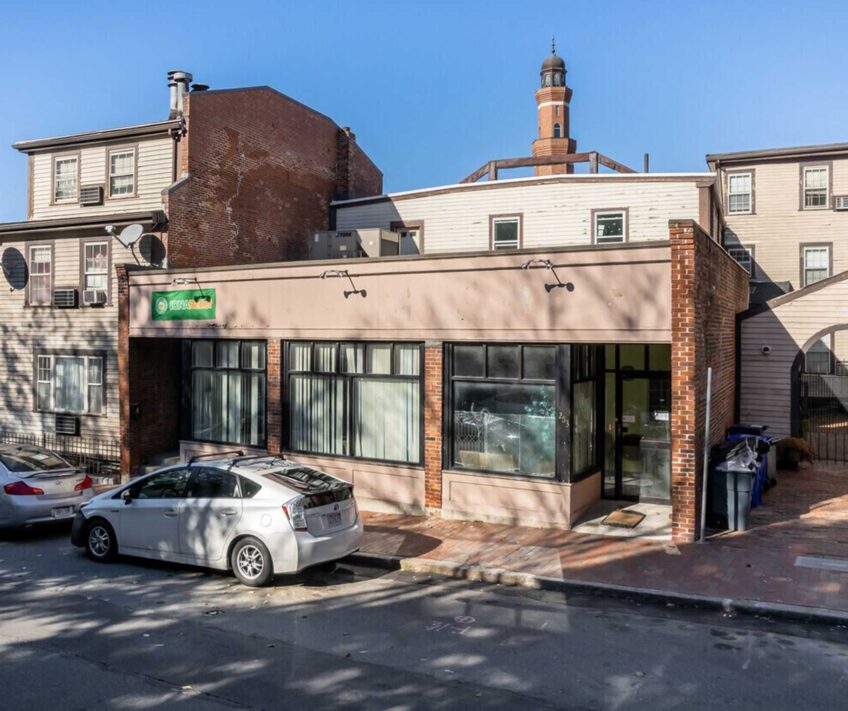For older adults, loneliness could mean increased risk of stroke, new study finds
Adults who are chronically lonely are at higher risk for strokes, according to new research from the Harvard T.H. Chan School of Public Health.
The study, published June 24 in eClinicalMedicine, found that adults in the United States over 50 years old who were identified to be chronically lonely over a span of four years had a 56% higher risk of having a stroke compared to those who were consistently less lonely.
The study brings attention to a growing field of research on the broader health impacts of loneliness and social isolation, and expands understanding of the risk of loneliness over a longer term, said Yenee Soh, a research associate at the school, who worked on the study.
“Recognizing that loneliness has consequences beyond just the experience in itself and can have impacts on other physical health outcomes is quite a significant issue to consider, especially as we have an increasingly aging population, and loneliness is an increasingly problematic issue,” said Soh, who holds a doctor of science degree.
The study found that the elevated risk was not seen in adults over 50 who only were only identified as lonely at a single point during the four-year time period.
“This suggests to us that, in the short term, loneliness may not be put people at higher risk, but over time, if we don’t address it and loneliness becomes a chronic experience, there’s a potential, based on our study, that the risk is much higher for stroke,” Soh said.
That heightened likelihood of stroke was correlated with chronic isolation is particularly notable, said Andrew Steptoe, a professor of psychology and epidemiology at the University College London, who was not affiliated with the study.
“A single or one-off measure may be affected by transient factors on the day of assessment, for example feeling lonely because you have had a row with someone, or your loved ones happen to be away. But if individuals report loneliness across a four-year period, this suggests that the experience is long-lasting,” Steptoe said in an email.
For older adults in Boston, the local landscape in some ways sets individuals up for social isolation, said Jean DeMayo, director of development and marketing at Little Brothers-Friends of the Elderly Boston, a local nonprofit that runs programming to connect older adults in public and affordable housing with younger volunteers to reduce isolation.
According to the American Community Survey, an annual data collection effort run by the U.S. Census Bureau, nearly 35% of adults over 65 in Boston live alone — nationally, that number is closer to 27%.
DeMayo also pointed to older adults living below the poverty line or facing language barriers, but said efforts like the programming Little Brothers–Friends of the Elderly offers can help close gaps.
“Those factors put them in an increased risk for loneliness and isolation,” she said. “When we connect generations to one another, we find not only health benefits from a physical standpoint, but mentally and emotionally too.”
Even in settings like senior housing complexes or senior centers, where Little Brothers–Friends of the Elderly runs programming, older adults may not have many social connections.
Stephanie Hisman-Hou, program director at the organization, said that she’s heard from participants that sometimes they don’t know anyone else in their building before participating in a Little Brothers–Friends of the Elderly event.
A loneliness epidemic
The Harvard study comes as health professionals worldwide have identified growing concerns around loneliness and social isolation across age groups. Last year, the U.S. Surgeon General released an advisory identifying loneliness and isolation as an epidemic — a move that Soh called “pivotal.”
In that advisory, Dr. Vivek Murthy, the surgeon general, identified isolation and loneliness as a widespread concern across the United States.
“Given the profound consequences of loneliness and isolation, we have an opportunity, and an obligation, to make the same investments in addressing social connection that we have made in addressing tobacco use, obesity and the addiction crisis,” he wrote in the advisory.
Other prominent health groups, like the World Health Organization, have identified loneliness and isolation as public health and policy issue in need of action.
Steptoe said he sees a large need for research and health efforts to focus on loneliness and isolation, especially among aging populations.
“There are many reasons why we should be concerned with loneliness at older ages, including its effects on quality of life and mental health,” he said. “What this [work from Harvard] and similar studies show is that loneliness may impact physical health as well.”
And the impact goes beyond just middle-aged and older adults. According to a Gallup poll released in October, nearly a quarter of individuals 15 years and older worldwide feel very or fairly lonely.
The Surgeon General’s advisory also cited research that found prolonged loneliness was connected to increased rates of depression among adults as well as children and adolescents, and found that while older adults are more likely to be socially isolated, young adults aged 18 to 24 are almost twice as likely to report feeling lonely to those over 66.
More research is needed
But research in the field still has room to grow, Soh said.
Even within the new Harvard study, the results only shed light on adults over 50 in the United States — more research would be needed to consider younger populations or those in other parts of the world, she said.
And though the paper identified some pathways by which loneliness could raise the risk of stroke in older adults, Steptoe said studies of this type cannot definitively show that loneliness is the cause of the strokes.
But work like this raises new questions to better understand the impact loneliness and isolation have on physical health, such as why some people can be frequently isolated but don’t feel lonely while others may be “lonely in a crowd,” or, if loneliness really is causing increased stroke risk, what the pathway for that impact really is, Steptoe said.
Soh said that question of mechanisms would be an important step forward in the field, especially to make the results from studies like hers more actionable.
“Ultimately, if we want to intervene, because we perceive loneliness as a risk factor, what are the interventions that people can do, and what does that intervention address?” she said. “More study on whether interventions are successful, at least short term and preferably in the longer term, would also be important next research steps.”






